Even though the cutoff date for applying dicamba over the top of soybeans passed last week, there is still some conversation about dicamba applications. Questions have been coming into Weed Science Specialist, Sarah Lancaster, about off-target movement of dicamba to sensitive soybeans. There has been considerable research on this topic in recent years, and this article summarizes some of the work conducted in Kansas.
Before presenting the data, readers should remember that dicamba is used in several cropping systems including range and pasture, fallow, and corn, in addition to Xtend soybeans, so the herbicide could come from any of those areas. Also, there are other types of herbicides that can cause leaf malformations. Be sure to consider the other herbicides applied in or near your soybeans. You can review herbicide injury symptoms in C715 “Herbicide Mode of Action”.
Particle versus vapor drift
One other bit of background information is to consider the two types of off-target movement with regard to dicamba: particle drift and vapor drift. Particle drift occurs when droplets of the herbicide are blown away from the application site. Crop response to particle drift will be most severe near the source of the drift because a greater herbicide dose is delivered to the sensitive plants. Vapor drift occurs when the herbicide moves as a cloud of very fine particles. Vapor drift results in relatively less crop response, but the effects can be observed at greater distances from the source of the drift.
Summary of results from simulated dicamba drift research
Research studies were conducted in Manhattan and Ottawa in 2018 and 2019. There were two studies at each location. The objective of the first study was to compare the response of soybean varieties to simulated dicamba drift at 1/100th of the labeled rate (Figure 1). The objective of the second study was to determine soybean response to multiple exposures of simulated dicamba drift. Three dicamba rates were included in this study, but only the 1/100th rate will be discussed here. Soybean varieties and application timings are listed in the figures and tables. As expected, the environment played an important role in both the observed injury and soybean yield. When statistically necessary, the data are presented for each location.
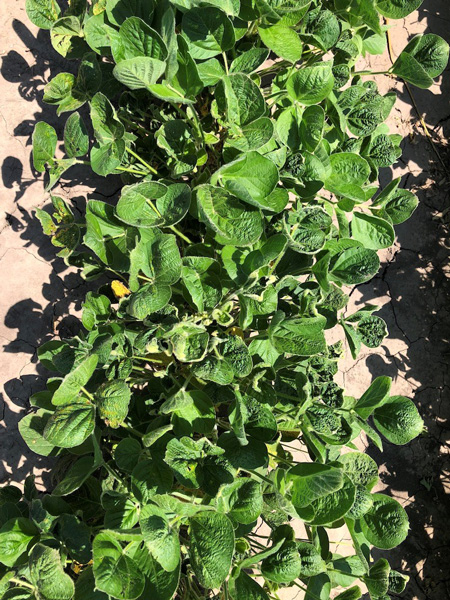
Figure 1. Leaf cupping and crinkling two weeks after soybean exposure to 1/100th of a field-use rate of dicamba at V3 growth stage. Photo by T. Meyeres, K-State Research and Extension.
Figure 2 shows soybean injury four weeks after application to four soybean varieties. There were few differences among soybean varieties, but applications made at R1 caused greater injury than applications made at V3.
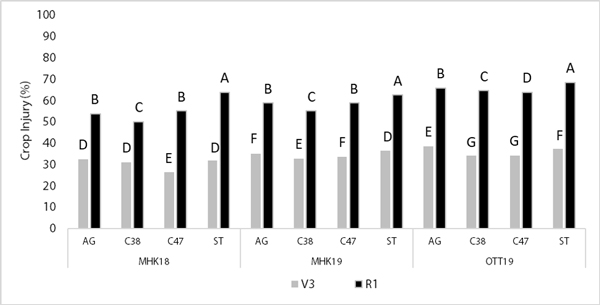
Figure 2. Soybean injury observed four weeks after application of 0.022 fl. oz of XtendiMax to four varieties (AG4135, CR3841, CR4748, and ST40B) at V3 or R1 growth stage.
The differences between application timings were even greater and could be combined across locations when injury evaluations were made at soybean senescence (Figure 3).
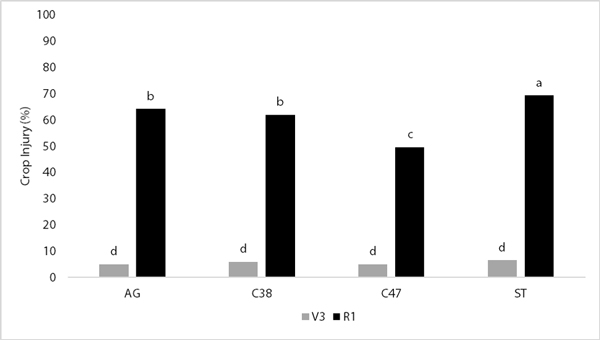
Figure 3. Soybean injury observed at soybean senescence (R7) following application of 0.022 fl. oz of XtendiMax to four varieties (AG4135, CR3841, CR4748, and ST40B) at V3 or R1 growth stage.
Injury at soybean senescence was associated with reduced yield. Yield following application at R1 was less than the nontreated check for all varieties (Figure 4). CR3841 and ST40B yielded less when dicamba was applied at R1 compared to V3.
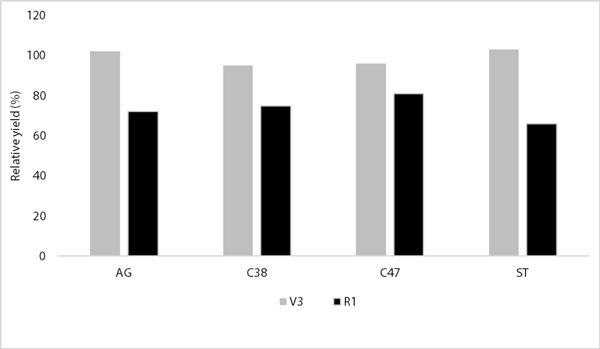
Figure 4. Soybean yield following application of 0.022 fl. oz of XtendiMax to four varieties (AG4135, CR3841, CR4748, and ST40B) at V3 or R1 growth stage.
Figure 5 shows soybean injury four weeks after soybeans were treated with one, two, or three dicamba applications. Any treatment that included an application at R1 or R3 resulted in greater injury that an application at V3 only, which was 9% to 17%. Injury following application at R1 or R3 was 12% to 37% and injury following two applications ranged from 19% to 58%. Injury observed following three applications was 40% to 58% and was statistically similar to applications at R1 followed by R3. Similar trends were observed when soybean injury was evaluated at senescence.
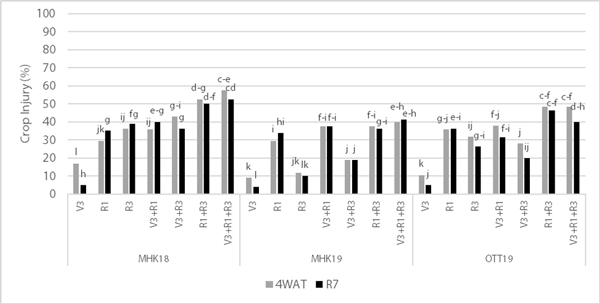
Figure 5. Soybean injury following one, two, or three applications of 0.022 fl. oz of XtendiMax to CR3841 at V3, R1, or R3 growth stage.
The greatest yield reductions occurred in treatments that included an application at R1 (Figure 6).
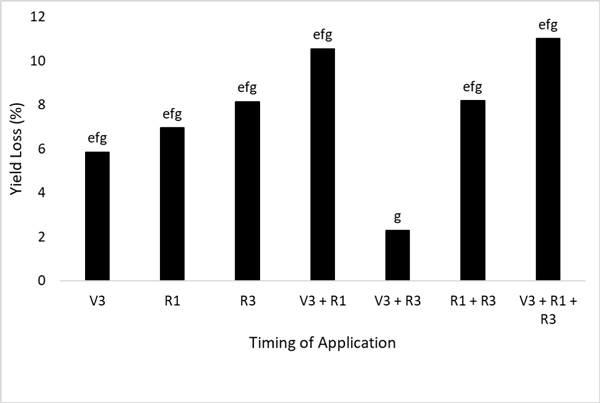
Figure 6. Soybean yield following one, two, or three applications of 0.022 fl. oz of XtendiMax to CR3841 at V3, R1, or R3 growth stage.
Take home message
What does all of this mean for a field of damaged soybeans? If a single dicamba drift event occurred during vegetative growth stages, the field is at less risk for yield loss. However, yield reductions should be expected if the drift event occurs near the time of flowering. Yield reductions will be greater if multiple drift events occur, especially if they occur during reproductive growth stages.
Sarah Lancaster, Weed Science Specialist
slancaster@ksu.edu